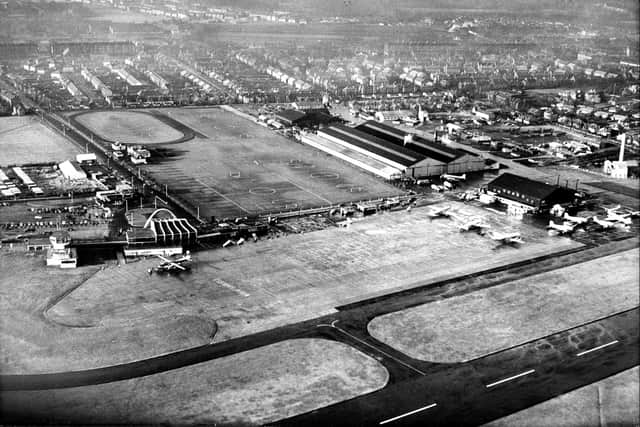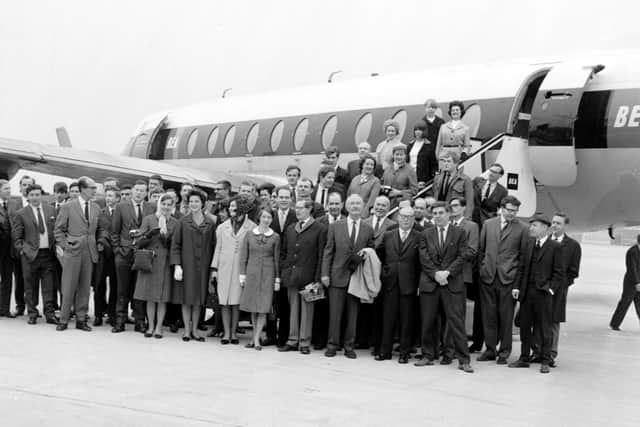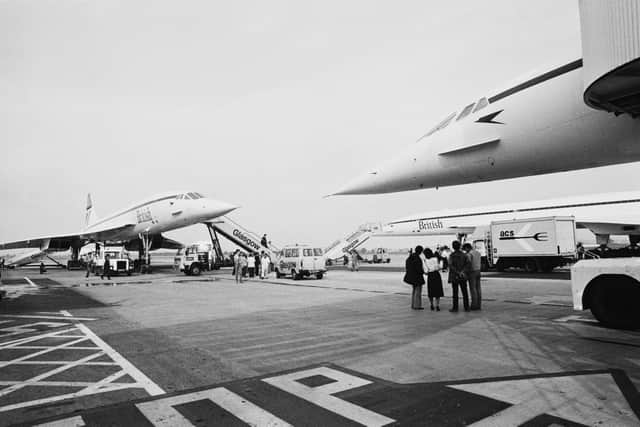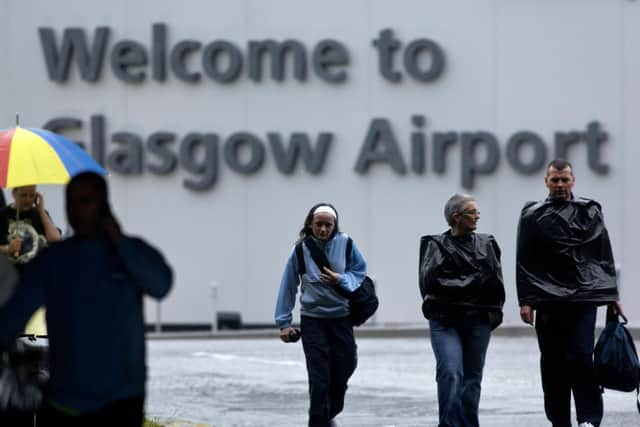How Glasgow Airport evolved after take off in the 1960s
and live on Freeview channel 276
The air travel industry was booming. The number of people flying - whether domestic or international - was rising year on year, as Scots headed off to exotic locations.
But it was clear that Renfrew Airport, despite an extension in the ‘50s, was unable to keep up with increasing demand. Surrounding buildings meant that it had no room to grow. A new airport was needed for Glasgow.
Abbotsinch
Advertisement
Hide AdAdvertisement
Hide AdThe nearby Abbotsinch had started life in the ‘30s as an overspill for the RAF base at Renfew. It was handed over to the Royal Navy during World War II and was home to the No 602 (City of Glasgow) Squadron.
After the UK Government searched for a replacement for Renfrew Aiport, Abbotsinch was selected as the chosen site.


It was estimated that transforming the airfield into a fully-fledged airport would cost in the region of £4.3 million - a figure to be split between the Glasgow Corporation, which would take over the facility upon completion, and the UK Government.
It was thought that work could be finished in 1966, and it was (try finding a major infrastructure project that has finished on time now).
Advertisement
Hide AdAdvertisement
Hide AdWork on bringing the runway up to scratch began in 1964, while a second runway for smaller aircraft and a new terminal were both constructed. The terminal opened at a cost of £2 million and boasted two piers and 17 aircraft stands.
Despite the development, the site had room for future expansion - something which would prove vital.
Renfrew Airport, meanwhile, would be demolished - the site is now home to a Tesco superstore, part of the M8 and a pub, the Flying Scotsman.
Take off
The opening of Glasgow Airport “marks a vital step forward in improved public service” - that was the message on the pamphlet celebrating the opening of the new airport.
Advertisement
Hide AdAdvertisement
Hide AdIt argued that “the new Glasgow Airport will give stimulus to business and tourism and will play an increasingly important part in the development of Scotland”.
After welcoming its first arrival in May 1966, Queen Elizabeth II did the honours for its official opening one month later.


One of the important debates during the early years of the airport was its relationship with Prestwick Airport. The Glasgow Corporation and the British Airports Authority regarded the two as “complementary”, with Glasgow Airport focusing on short and medium haul traffic and Prestwick serving long haul for the whole of Scotland - with a particular focus on trans-Atlantic services.
But one issue became clear early on - Glasgow Airport needed to grow.
Advertisement
Hide AdAdvertisement
Hide AdThe passenger terminal, designed using a brief from the Ministry of Aviation in 1961, had been built under the impression that the airport would be handling 1.6 million passengers per year by 1970.
Instead, it had hit that figure in 1967 - far earlier than expected. Just two years after opening, the bar and first floor had to be extended. And more change would come.
Extension
Designs were put forward in 1969, which would allow Glasgow Airport to cope with five million passengers per year - a figure it was expected to smash in 1980. And it was not just the increase in passengers which required the airport to change. Planes were getting bigger.
It was proposed that the central pier, north apron, terminal and car park be extended, while a new third pier be constructed.
Advertisement
Hide AdAdvertisement
Hide AdThe designers made it clear - Glasgow Airport facilities were already “overstretched”.
The runway was extended in 1973, and, in 1975, after the airport was purchased by BAA, the terminal was expanded.


But it would not be constant growth. The first big hit was the 1973 Oil Crisis, which saw the cost of running flights soar.
The second hit came from the improvement of train services between Glasgow and London. The service between the two cities had been the most popular one in 1966, but the electrification of the rail line meant that trains became the popular choice.
Advertisement
Hide AdAdvertisement
Hide AdA report in 1974 from the British Airports Authority predicted that domestic air use would drop significantly, and then flat-line to fewer than two million passengers per year. International air use, however, was expected to keep rising.


More developments would come. The terminal was given a massive extension in the late ‘80s, a new pier opened in the ‘90s, and a second terminal opened in the ‘00s.
It is now Scotland’s second busiest airport - with more than 8 million passengers flying from Glasgow each year.
Comment Guidelines
National World encourages reader discussion on our stories. User feedback, insights and back-and-forth exchanges add a rich layer of context to reporting. Please review our Community Guidelines before commenting.
